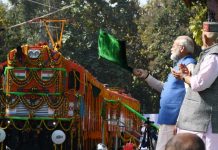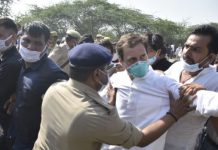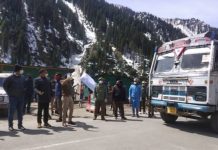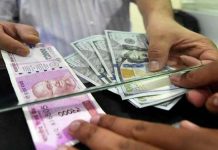
J&K govt dismisses the controversial cop Davinder Singh caught accompanying militants to Delhi, reports RIYAZ WANI
In a first decision of its kind, the Jammu and Kashmir government on May 20 dismissed Deputy Superintendent of Police Davinder Singh from service with “immediate effect”. Last year in January, Singh was caught accompanying two top Hizbul Mujahideen militants — one of them Naveed Babu, the outfit’s then No 2 — to New Delhi ahead of Republic Day.
An order issued by the J&K government said: “The Lieutenant Governor (LG) is satisfied after considering the facts and circumstances of the case and on the basis of information available, that activities of Davinder Singh, Deputy Superintendent of Police (under suspension) are such as to warrant his dismissal from service.”
The order added that the LG Manoj Sinha is also “satisfied” that “in the interest of the security of the state, it is not expedient to hold an enquiry” in the case involving DSP Davinder Singh.
Singh hails from South Kashmir’s Tral, a hometown he shared with the slain popular Hizbul Mujahideen commander Burhan Wani. Though there is no evidence if Singh and Wani knew each other, the arrest of the police officer along with Babu makes it apparent his ties with the outfit went back a long way.
The militants Singh was caught with had been staying at his residence in high security locality of Indira Nagar in Srinagar. And the early investigation into his role had revealed that he had harboured militants at his house before also.
Incidentally, days before being caught with militants, Singh was part of the security team that had received the 16 foreign envoys at Srinagar airport. This was an important visit as the envoys were touring J&K in the wake of the revocation of Article 370 that granted the former state its autonomous status within Indian Union. He was photographed standing right behind one of the envoys.
In July last year, the National Investigation Agency (NIA) had filed a charge sheet against Singh for his association with militant groups in Kashmir valley. The charge sheet had also named Hizbul Mujahideen militants Naveed Babu and Rafi Ahmad Rather, Irfan Shafi Mir, Tanveer Ahmad Wani, a former trader on the LoC and Syed Irfan Ahmad (brother of Naveed Babu).
“The investigation has revealed that accused were part of a deep-rooted conspiracy hatched by the Pakistan-based terrorist organization Hizb-ul-Mujahideen and Pakistani State Agencies to commit violent acts and to wage war against the Union of India,” the NIA statement said adding that Singh was also in touch with certain officials of Pakistan High Commission in New Delhi through secure social media platforms. “Investigation revealed that he was being groomed by Pakistani officials for obtaining sensitive information,” the NIA said.
Alarmingly enough, the charge sheet also revealed that Singh had arranged safe shelter for Babu and his associate in Jammu in February 2019, in order to shield him from the heightened surveillance of security agencies. Singh is also accused of having used his own vehicle for the movement of militants and had assured them help in procuring weapons.
He had also been granted bail last year but continued to remain in jail in the case being probed by the NIA relating to ferrying militants in a vehicle on the Srinagar-Jammu highway. Bail for him at the time had been criticized by the opposition.
However even before his capture last year along with militants, Singh’s career was steeped in controversies. Singh was recruited as a sub-inspector in J&K Police in 1994 when he had just finished graduation from a Srinagar college. He later joined the Special Operations Group (SoG) of the police which was exclusively tasked to combat militancy. But following complaints of extortion, Singh was removed from the SOG. In 2003, he was part of a UN peacekeeping mission in Kosovo for a year.
But his arrest along with militants had set alarm bells ringing not only in the J&K’s security establishment which prides itself for being at the forefront of the fight against militancy in the country, but also in New Delhi. It raised deeply troubling questions. Who is Singh? Who was he working for? Was he helping militants carry out a sensational attack in New Delhi ahead of Republic Day?
Singh’s story goes way back. Before his arrest last year, Singh was posted twice in the preceding three years in the militancy ridden district Pulwama. And on both occasions militants had been able to strike in a big way: In August 2017, militants stormed police lines in Pulwama. The 19-hour gun battle resulted in the killing of CRPF men and four policemen besides the three militants who carried out the attack.
Singh was again posted in Pulwama when more than forty CRPF personnel were killed during a suicide attack on a security convoy carried out by a militant owing allegiance to Jaish-e-Mohammad. The attack that killed over 40 CRPF personnel led to skirmishes between India and Pakistan, bringing the two countries to the brink of a full fledged war.
Even for that matter Afzal Guru, hanged for his role in 2001 parliament attack had in a letter
accused Singh of forcing him to accompany one of the attackers “Mohammad” to New Delhi and arranging an accommodation for him there. It was as an officer of the Task Force that Singh had met Guru after the latter was arrested by the Task Force for not working for them. Mohammad, who Guru was accompanying was subsequently killed during the attack on the parliament. The accusation was never investigated, although in an interview to media in 2006, Singh had admitted to torturing Guru in custody but denied sending any militant with him.
The question rgar can be asked is what was Singh’s role in two major attacks in Pulwama, including the suicide bombing in February 2019 when he was posted there? Or for that matter in parliament attack? What were his motivations? Was he working for militants or were militants working for him?
His arrest meant that he was working for militants. But it is yet unclear why. Was he doing this to earn some extra bucks or was there any affinity at an ideological level? These questions and the answers to them have profound security implications. The case is one of the most sensitive to be handled by the NIA in a long time. And people are expecting that the agency gets to the bottom of it and uncovers the mystery: what drove a decorated police officer to aid the militants. Who was using whom? These questions will take time to be answered or may not be answered at all.
tehelkaletters@gmail.com













